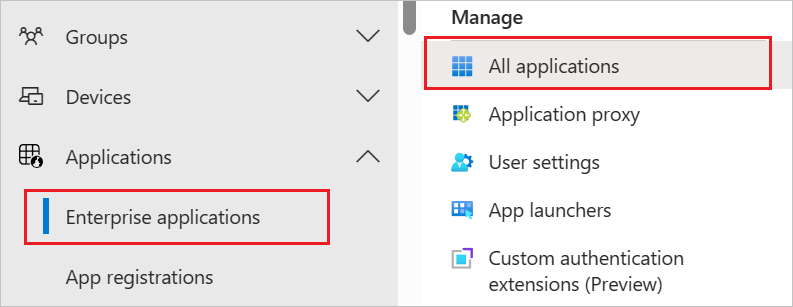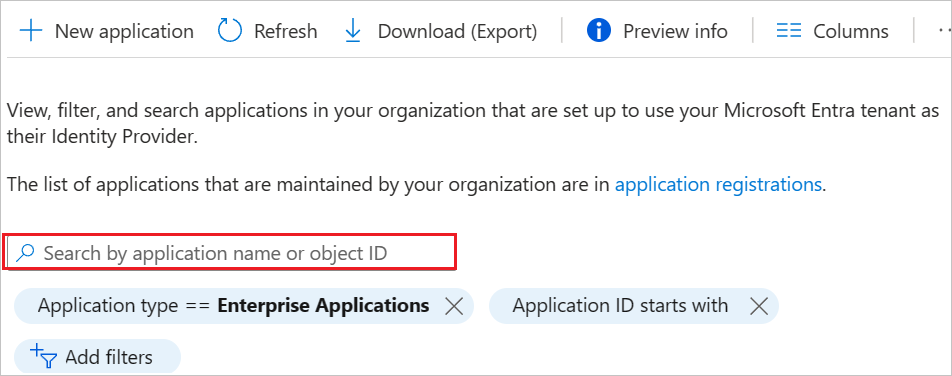Tutorial: Configure Zoom for automatic user provisioning
This tutorial describes the steps you need to perform in both Zoom and Microsoft Entra ID to configure automatic user provisioning. When configured, Microsoft Entra ID automatically provisions and deprovisions users to Zoom using the Microsoft Entra provisioning service. For important details on what this service does, how it works, and frequently asked questions, see Automate user provisioning and deprovisioning to SaaS applications with Microsoft Entra ID.
Capabilities supported
- Create users in Zoom
- Remove users in Zoom when they do not require access anymore
- Keep user attributes synchronized between Microsoft Entra ID and Zoom
- Single sign-on to Zoom (recommended)
Prerequisites
The scenario outlined in this tutorial assumes that you already have the following prerequisites:
- A Microsoft Entra tenant.
- A user account in Microsoft Entra ID with permission to configure provisioning (like Application Administrator, Cloud Application Administrator, or Application Owner).
- A Zoom tenant.
- A user account in Zoom with Admin permissions.
Step 1: Plan your provisioning deployment
- Learn about how the provisioning service works.
- Determine who will be in scope for provisioning.
- Determine what data to map between Microsoft Entra ID and Zoom.
Step 2: Add Zoom from the Microsoft Entra application gallery
Add Zoom from the Microsoft Entra application gallery to start managing provisioning to Zoom. If you have previously setup Zoom for SSO you can use the same application. However it is recommended that you create a separate app when testing out the integration initially. Learn more about adding an application from the gallery here.
Step 3: Define who will be in scope for provisioning
The Microsoft Entra provisioning service allows you to scope who will be provisioned based on assignment to the application and or based on attributes of the user. If you choose to scope who will be provisioned to your app based on assignment, you can use the following steps to assign users to the application. If you choose to scope who will be provisioned based solely on attributes of the user, you can use a scoping filter as described here.
Start small. Test with a small set of users before rolling out to everyone. When scope for provisioning is set to assigned users, you can control this by assigning one or two users to the app. When scope is set to all users, you can specify an attribute based scoping filter.
If you need additional roles, you can update the application manifest to add new roles.
Step 4: Configure automatic user provisioning to Zoom
This section guides you through the steps to configure the Microsoft Entra provisioning service to create, update, and disable users in TestApp based on user assignments in Microsoft Entra ID.
To configure automatic user provisioning for Zoom in Microsoft Entra ID:
Sign in to the Microsoft Entra admin center as at least a Cloud Application Administrator.
Browse to Identity > Applications > Enterprise applications > All applications.

In the applications list, select Zoom.

Select the Provisioning tab.

Set the Provisioning Mode to Automatic.

Under the Admin Credentials section, select OAuth2 Authorization Code Grant. Enter
https://api.zoom.us/scimin Tenant URL, click on Authorize, make sure that you enter your Zoom account's Admin credentials. Click Test Connection to ensure Microsoft Entra ID can connect to Zoom. If the connection fails, ensure your Zoom account has Admin permissions and try again.
Note
You will have two options for your Authentication Method: Bearer Authentication and OAuth2 Authorization Code Grant. Make sure that you select OAuth2 Authorization Code Grant. Zoom no longer supports the Bearer Authentication method
In the Notification Email field, enter the email address of a person who should receive the provisioning error notifications and select the Send an email notification when a failure occurs check box.

Select Save.
Under the Mappings section, select Synchronize Microsoft Entra users to Zoom.
Review the user attributes that are synchronized from Microsoft Entra ID to Zoom in the Attribute-Mapping section. The attributes selected as Matching properties are used to match the user accounts in Zoom for update operations. If you choose to change the matching target attribute, you will need to ensure that the Zoom API supports filtering users based on that attribute. Select the Save button to commit any changes.
Attribute Type Supported for filtering Required by Zoom userName String ✓ ✓ active Boolean name.givenName String name.familyName String emails[type eq "work"] String urn:ietf:params:scim:schemas:extension:enterprise:2.0:User:department String userType String To configure scoping filters, refer to the following instructions provided in the Screenshot of the Scoping filter tutorial..
To enable the Microsoft Entra provisioning service for Zoom, change the Provisioning Status to On in the Settings section.

Define the users that you would like to provision to Zoom by choosing the desired values in Scope in the Settings section.

When you are ready to provision, click Save.

This operation starts the initial synchronization cycle of all users defined in Scope in the Settings section. The initial cycle takes longer to perform than subsequent cycles, which occur approximately every 40 minutes as long as the Microsoft Entra provisioning service is running.
Step 5: Monitor your deployment
Once you've configured provisioning, use the following resources to monitor your deployment:
- Use the provisioning logs to determine which users have been provisioned successfully or unsuccessfully
- Check the progress bar to see the status of the provisioning cycle and how close it is to completion
- If the provisioning configuration seems to be in an unhealthy state, the application will go into quarantine. Learn more about quarantine states here.
Connector limitations
- Zoom only allows a maximum of 9,999 basic users today.
Change log
- 05/14/2020 - Supports for UPDATE operations added for emails[type eq "work"] attribute.
- 10/20/2020 - Added support for two new roles Licensed and on-premises to replace existing roles Pro and Corp. Support for roles Pro and Corp will be removed in the future.
- 05/30/2023 - Added support for new authentication method i.e. OAuth 2.0.
Additional resources
- Managing user account provisioning for Enterprise Apps.
- What is application access and single sign-on with Microsoft Entra ID?
- Zoom Support article.
Next steps
Tagasiside
Varsti tulekul: 2024. aasta jooksul tühistame GitHubi probleemide funktsiooni sisutagasiside mehhanismina ja asendame selle uue tagasisidesüsteemiga. Lisateabe saamiseks vt https://aka.ms/ContentUserFeedback.
Esita ja vaata tagasisidet